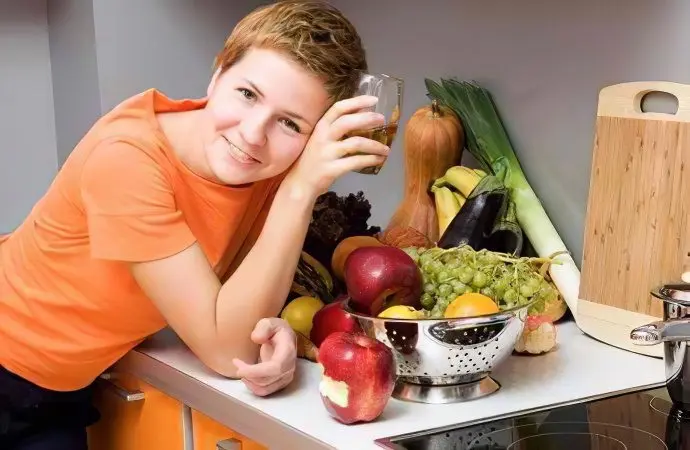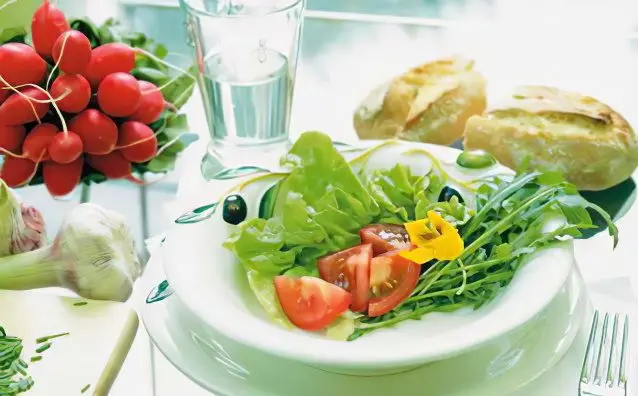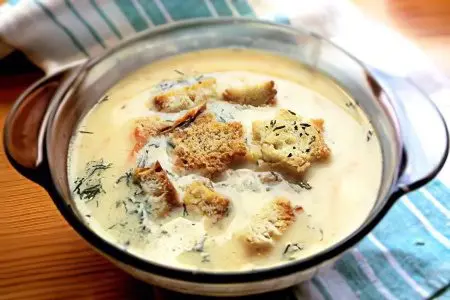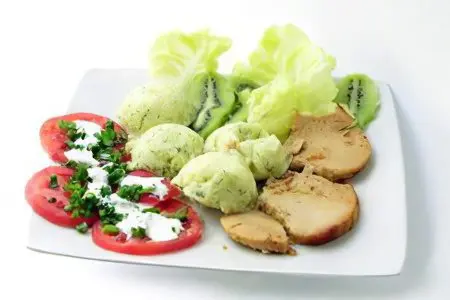Contents
Diet for pancreatitis, especially in chronic, it is very important to observe. You should eat as much protein as possible and at the same time you need to reduce or completely eliminate fats and carbohydrates, especially sugar, which is 99% carbohydrates, exclude fried foods and any foods containing coarse fiber. It is advisable to start taking vitamins. There should be little, but often, that is, 5-6 times a day.
The pancreas is necessary to ensure the normal functioning of the body: it is thanks to the digestive juice that it secretes into the lumen of the duodenum that the main components of food are split – proteins, fats and carbohydrates. As a result of the digestion process that occurs in this part of the digestive tract, simpler compounds are obtained that enter the general circulation after absorption by the intestinal mucosa. Thus, the nutrients, amino acids and vitamins necessary for the flow of metabolic processes in cells and for building tissues are formed from food products in the duodenal region and reach all organs and systems of the body.
In addition, the pancreas produces insulin, necessary for the normal course of carbohydrate metabolism, and lipokine, which prevents fatty degeneration of the liver.
The most common cause of pancreatitis is the abuse of fatty foods and alcoholic beverages. The disease can occur in both acute and chronic forms. The diet for pancreatitis depends on the characteristics of the course of the pathological process: the acute period requires a stricter attitude to the diet and foods eaten.
In acute or chronic inflammation of the pancreas, cardinal digestive disorders occur, including:
the pH of the medium of the small intestine changes to the acidic side, as a result of which the patient feels heartburn, burning in the intestines;
enzymes accumulate inside the gland, begin the process of tissue self-digestion, causing severe pain in the abdomen in the navel, on the right;
toxic substances accumulate, self-poisoning of the body occurs;
violation of insulin secretion, provokes sugar diabetes.
The pathogenesis of pancreatitis develops according to the type of acute or chronic inflammation. The principle of treatment of all forms of pancreatitis includes, according to indications:

surgical intervention;
drug replacement therapy, taking into account the nature of inflammation, the patient’s condition;
therapeutic diet food.
Proper nutrition at the stages of pancreatitis rehabilitation, especially after the patient is discharged from a medical institution, significantly increases the chances of a full recovery or stabilization of the pathology.
It is at home that the principle of dietary nutrition is often violated. Meanwhile, it is important to follow the immutable rules of a therapeutic diet. Moreover, diets do not contain expensive products, their preparation is the simplest, including: chopping, boiling, steaming.
Diet for acute pancreatitis
During the period of exacerbation of an attack of pancreatitis, before the arrival of an ambulance, it is allowed to apply cold compresses to the area of pain, usually pain in the pit of the stomach. During this period, it is allowed to drink mineral water (for example, Borjomi, Narzan). The daily volume of fluid is up to five to six glasses, with normal urination. Simple liquids suppress the release of pancreatic juice into the duodenal lumen, reduce pain, and remove toxins from the body.
To illustrate the principles of diets for pancreatitis, we made extracts from these documents. Numbered diets, officially, are not used in medical institutions. With pancreatitis, diets with the abbreviation – ShchD and IAP are recommended.
In acute pancreatitis in the first two days, the patient is prescribed hunger. It is allowed to drink only rosehip broth or mineral water – one glass up to five times a day. On the third day, food is allowed, but only low-calorie foods, excluding fats, salt and dishes that increase the secretion of gastric juice and stimulate the process of gas formation in the intestines.
Stage of fading exacerbation of pancreatitis

A diet is recommended taking into account the mechanical and biochemical sparing of the intestinal mucosa.
This meal includes:
the physiological level of the main components of food – proteins, lipids, carbohydrates;
increased amount of fat- and water-soluble vitamins;
low content of substances that irritate the intestinal mucosa, including food seasonings;
it is forbidden to use spicy, salty, spicy, smoked.
Methods of preparation: steam heat treatment. Food is crushed, wiped, small pieces of cooked food are allowed. The temperature of the food served on the table should not exceed 650C. The recommended number of meals is five to six per day.
The content in the daily serving of total protein is 90 grams, animal origin is 40 grams.
Containing a daily portion of fat, 80 grams, vegetable 30 grams.
The content of carbohydrates in a daily portion of 300 grams, easily digestible 60 grams.
Energy value 2480 kilocalories.
After the symptoms of acute pancreatitis subside, it is better to switch to soups, eat lean meats and fish, fresh cottage cheese, cereals and vegetables, and puddings. Foods such as fruit juices, honey, jam, sugar should be reduced or eliminated from the diet. Before going to bed, laxative drinks are useful: kefir, yogurt, etc. It is important to completely abandon fatty foods, muffins, fried fish, bacon, sour cream, salty and smoked dishes, marinades, onions, garlic, radishes, alcoholic beverages.
The recommended diet for acute pancreatitis should be followed from six months to a year. Almost one hundred percent of the patient’s health depends on how strictly he adheres to the doctor’s prescriptions regarding the diet. It is important to remember that all errors in the diet are immediately reflected in the state of the pancreas.
Chronic pancreatitis in remission

In this embodiment, a different approach to the nutrition of the patient. During this period, nutritionists recommend including a high protein content, a physiological norm of fats in the diet. A more complex approach to carbohydrates. The diet at the stage of remission involves:
protein is allowed slightly above the physiological norm;
the norm for fats and complex carbohydrates in the form of cereals;
below the norm, include sugar, honey, jam, cakes, sweet pastries in the diet, and table salt is also below the norm.
With this option, it is forbidden to eat substances that irritate the mucous membranes of the gastrointestinal tract. Such products include vinegar, alcohol, and other substances used as seasonings.
Dishes are cooked boiled, stewed, baked, steamed. It is allowed to serve food in a wiped, not wiped form. Feeding at short intervals, in small portions 4-6 times a day. Food is served warm. Its temperature is not higher than sixty degrees Celsius.
The content in a daily serving of total protein is 120 grams, including 50 grams of animal origin.
The content in the daily serving of fats is 90 grams, vegetable fats are 30 grams.
The content in the daily portion of carbohydrates is 350 grams, easily digestible 40 grams.
Energy value 2690 kilocalories.
Diet for chronic pancreatitis
Chronic pancreatitis of the pancreas develops in most cases against the background of an acute disease. At the same time, it can be primary if the patient suffers from cirrhosis of the liver, hepatitis, duodenal pathology, cholelithiasis, allergies, atherosclerosis, and alcohol abuse.
The diet for chronic pancreatitis is considered the main one in the treatment of this disease. In remission, the number of calories contained in the daily diet should correspond to physical activity. It is recommended to take food up to six times a day, not forgetting about foods that have a laxative effect.
It is important to monitor your daily protein intake. Since it is necessary for the normal course of recovery processes, it must be consumed in sufficient quantities – up to 130 grams per day, and only 30% of the protein should be of plant origin.
In the diet of a patient suffering from chronic pancreatitis, it is necessary to include beef, veal, rabbit meat, chicken, turkey, lean pork. Forbidden: lamb, fatty pork, as well as goose, duck and game meat. If the patient is disturbed by frequent pains, meat dishes are boiled in chopped form or steamed, dishes cannot be baked in the oven, fried and stewed. Lean fish is cooked in the same way.
Meat and fish dishes with a low fat content help the patient avoid fatty degeneration of the liver, which is of great importance in chronic pancreatitis. Homemade cottage cheese also has a similar property, but only if it is non-acidic and fresh, store-bought cottage cheese is not recommended.

Milk in its pure form in chronic pancreatitis is most often poorly tolerated, so it is better to add it to cereals, soups, jelly during their preparation. Even if milk is well tolerated by patients, they should not be abused, drinking no more than half a glass of warm milk per day in small sips. Much more useful for people suffering from pancreatitis, fresh fermented milk products. Forbidden during an exacerbation of the disease, cheese in remission can be eaten in small quantities, provided that you feel well. Cheese should be low-fat and not spicy. Whole eggs are excluded from the diet, while steamed protein omelettes, dishes with whipped proteins are allowed, in addition, eggs may be present as an additive in other dishes.
Vegetable proteins can be represented by rice, yesterday’s bread, crackers, semolina, oatmeal, buckwheat, pasta. Legumes are forbidden to eat with pancreatitis.
Fats in the diet should be no more than 70 grams, and 80% of them are fats of animal origin, it is better to eat them along with other dishes and food products. It is better to put the oil in the finished dish immediately before eating, vegetable oil is permissible only if it is well tolerated. Cooking fats, margarine, beef and pork fat are prohibited.
Carbohydrates in the daily diet should contain no more than 350 grams, they can be represented by sugar, honey, jam, syrup. From foods rich in carbohydrates, crackers, semolina, oatmeal, buckwheat, pearl barley, rice, pasta are allowed. Also, patients are allowed to eat potatoes, carrots, beets, pumpkins, zucchini, squash. Vegetable dishes should be cooked with steam or water, you can eat vegetable steam pudding. Boiled vegetables are best consumed in pureed form with the addition of cereal broth.
From fruits, non-acidic varieties of apples are recommended: ripe fruits can be baked, wiped, cooked from them compote, dried fruit compote is also useful.
Of all the sauces, bechamel based on milk and flour is considered the most optimal, and the flour is not sautéed, and very little salt is added.
First course (soups from cereals, vegetables, it is possible with milk, meat from lean meats, fish, as well as sweet fruit soups).
Main dishes (boiled beef, poultry, fish, chicken egg scrambled eggs).
Products containing cereals (cereals, pasta, white, black bread, vegetable oil).
Dairy, sour-milk products (milk 2,5%, fermented milk products, butter).
Berries, fruits, vegetables (ripe, sweet) raw, baked, carrots, beets – boiled, as a dressing for soups, as side dishes and independent dishes.
Dessert (easily digestible carbohydrates in pancreatitis are limited, that is, below the physiological norm, jam, honey, sugar).
Beverages (tea with milk, vegetable, fruit juices).
Specialized Products (mixture protein composite dry) Add fat- and water-soluble vitamins.
It is also important not to overeat, reducing the daily amount of food to 2,5 kilograms, taking into account the fluid you drink. Food is taken frequently and in small portions.
Following all the rules of nutrition for pancreatitis can significantly increase the effectiveness of therapy in general.

The number of products must be calculated based on the above regulatory documents.
Here is an approximate daily diet menu for pancreatitis:
First meal (7:00-7:30): boiled beef, oatmeal with milk, tea.
Second meal (9:00-9:30) scrambled eggs, baked apple, rosehip broth.
Third meal (12:00-13:00): vegetable soup, beef soufflé, pasta, sweet berry jelly, compote.
Fourth meal (16:00-16:30): cottage cheese and tea.
Fifth meal (20:00-20:30): fish soufflé, tea.
What to exclude?
As you can see, in a diet for pancreatic pancreatitis, all dishes are made from lean meat and fish – and then only in a boiled version. Fried foods are prohibited. You can use dairy products with a minimum percentage of fat content. From the liquid it is desirable to drink only natural juices and compotes and tea.
Completely exclude:
All types of alcohol, sweet (grape juice) and carbonated drinks, cocoa, coffee
Products of animal origin: by-products, including the first category, pork meat and lard, fatty fish, all smoked meats, spicy, fried, instant products based on extractives.
Vegetable products: legumes, mushrooms, spinach, sorrel, onions, bakery products based on pastry.
Desserts: chocolate, fatty creams.
Figs, grapes, bananas, dates.
Confectionery, chocolate, ice cream, jam.
Salo, cooking oils.
Hard boiled eggs, whole egg dishes, fried eggs
Answers to popular questions
Is goat milk allowed? This is a rather fatty product that is difficult for the pancreas to perceive. It is twice as fat as cow’s. Peoples whose diet has included goat’s milk from time immemorial are more adapted to the product. In an unaccustomed body, milk can provoke indigestion. The product should be included in the diet gradually, starting with small portions. If the body responds well (no nausea and vomiting, normal stools), portions can be increased.
Is matsoni allowed? This fermented milk product is allowed for pancreatitis. Before use, you need to pay attention to the fat content of the milk from which it is made. High-fat milk is not recommended for consumption.
Are muffins, puff pastry, gingerbread allowed? At the stage of exacerbation, the listed products cannot be eaten. At the stage of remission, yeast baking is allowed in small quantities. The menu may include puff pastry products. As for gingerbread, the quality and quantity of glaze is important (if there are insulin disorders, they should be minimally sweet). Inexpensive products are covered with a glaze made with palm or coconut oil, which is extremely harmful to the gland.
Is cinnamon allowed? Cinnamon is a spice that can be bought at a specialty store or supplied by distributors. What is presented in hypermarkets in packaged form is an inexpensive option called cassia. As for real Ceylon cinnamon, it enhances the production of digestive juice, which is undesirable during an exacerbation of the disease. (Read also: Benefits and harms of cinnamon)
Are by-products allowed? The heart, stomachs and liver are not a contraindication for pancreatitis, provided that they are properly prepared. Such products can be eaten boiled or stewed. It is not recommended to eat them fried.
Are processed cheese, bread, chocolates, coffee allowed? Processed cheese should be the simplest, that is, without any seasonings and additives. Bread can be included in the menu. Chocolate is allowed in small quantities. Coffee is not recommended at any stage of the disease. Alternatively, you can drink coffee with milk and in small quantities.
Is rice, olive oil allowed? Rice is allowed. Olive oil can be seasoned with salads and other dishes.
Is brine allowed? At the stage of remission, a small amount of brine does not hurt, but you should not drink it in large volumes.
Is lard allowed? Lard is hard on the liver and gallbladder. When it is used, the pancreas suffers a second time. Outside the stage of exacerbation, fat is allowed, but in small quantities (up to two slices a day, up to two times a week).










